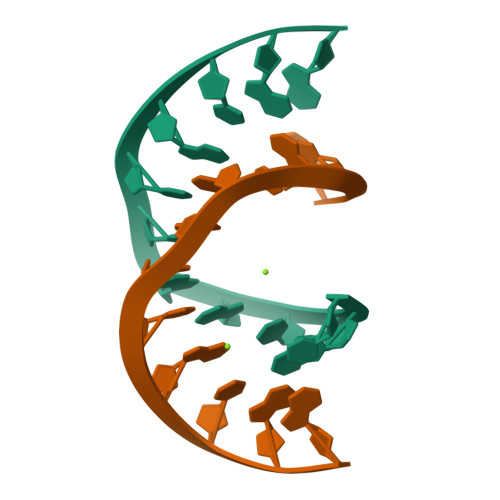5-Formylcytosine does not change the global structure of DNA.
Hardwick, J.S., Ptchelkine, D., El-Sagheer, A.H., Tear, I., Singleton, D., Phillips, S.E.V., Lane, A.N., Brown, T.(2017) Nat Struct Mol Biol 24: 544-552
- PubMed: 28504696
- DOI: https://doi.org/10.1038/nsmb.3411
- Primary Citation of Related Structures:
5MVK, 5MVL, 5MVP, 5MVQ, 5MVT, 5MVU - PubMed Abstract:
The mechanism by which the recently identified DNA modification 5-formylcytosine ( f C) is recognized by epigenetic writer and reader proteins is not known. Recently, an unusual DNA structure, F-DNA, has been proposed as the basis for enzyme recognition of clusters of f C. We used NMR and X-ray crystallography to compare several modified DNA duplexes with unmodified analogs and found that in the crystal state the duplexes all belong to the A family, whereas in solution they are all members of the B family. We found that, contrary to previous findings, f C does not significantly affect the structure of DNA, although there are modest local differences at the modification sites. Hence, global conformation changes are unlikely to account for the recognition of this modified base, and our structural data favor a mechanism that operates at base-pair resolution for the recognition of f C by epigenome-modifying enzymes.
Organizational Affiliation:
Department of Chemistry, University of Oxford, Chemistry Research Laboratory, Oxford, UK.



















